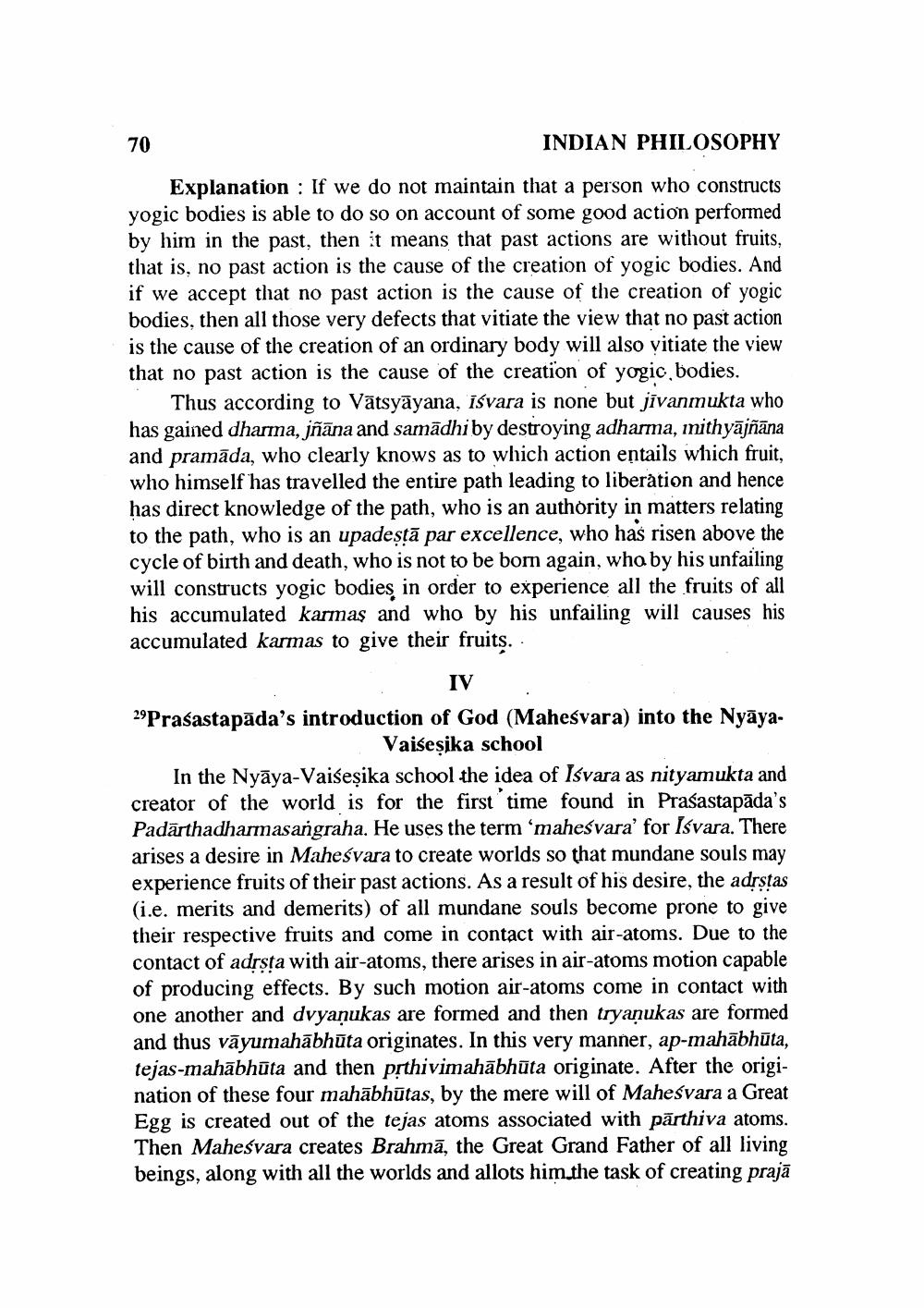________________
70
INDIAN PHILOSOPHY
Explanation : If we do not maintain that a person who constructs yogic bodies is able to do so on account of some good action performed by him in the past, then it means that past actions are without fruits, that is, no past action is the cause of the creation of yogic bodies. And if we accept that no past action is the cause of the creation of yogic bodies, then all those very defects that vitiate the view that no past action is the cause of the creation of an ordinary body will also vitiate the view that no past action is the cause of the creation of yogic bodies.
Thus according to Vātsyāyana, īśvara is none but jīvanmukta who has gained dharma, jñāna and samadhiby destroying adharma, inithyājñāna and pramāda, who clearly knows as to which action entails which fruit, who himself has travelled the entire path leading to liberation and hence has direct knowledge of the path, who is an authority in matters relating to the path, who is an upadestā par excellence, who has risen above the cycle of birth and death, who is not to be born again, who by his unfailing will constructs yogic bodies in order to experience all the fruits of all his accumulated karmas and who by his unfailing will causes his accumulated karmas to give their fruits.
IV
29Prasastapāda's introduction of God (Mahesvara) into the Nyāya
Vaiseșika school In the Nyāya-Vaisesika school the idea of Isvara as nityamukta and creator of the world is for the first time found in Prasastapāda's Padārthadharmasangraha. He uses the term ‘maheśvara' for Isvara. There arises a desire in Maheśvara to create worlds so that mundane souls may experience fruits of their past actions. As a result of his desire, the adrstas (i.e. merits and demerits) of all mundane souls become prone to give their respective fruits and come in contact with air-atoms. Due to the contact of adrsta with air-atoms, there arises in air-atoms motion capable of producing effects. By such motion air-atoms come in contact with one another and dvyanukas are formed and then tryanukas are formed and thus vāyumahābhūta originates. In this very manner, ap-mahābhūta, tejas-mahābhūta and then prthivimahābhūta originate. After the origination of these four mahābhūtas, by the mere will of Mahesvara a Great Egg is created out of the tejas atoms associated with parthiva atoms. Then Maheśvara creates Brahmā, the Great Grand Father of all living beings, along with all the worlds and allots him the task of creating prajā




